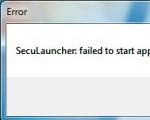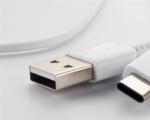Background lighting PaintPack is an analogue of Philips Ambilight on your monitor. Philips Ambilight technology (dynamic TV backlighting) Do-it-yourself adaptive backlighting for a monitor
A campaign to raise money for the production of Lightpack 2. We are talking about an LED strip that hides behind the TV, receives a signal via HDMI and illuminates what is happening on the screen in appropriate colors. It sounds like Ambilight from Philips, but, being a separate device, it has its own differences.
Firstly, Lightpack 2 has a Lightbridge switch, which serves as a hub for HDMI devices: the tape is connected to Lightbridge, it is connected to the TV, and sources are directly connected to it via four HDMI inputs.
Secondly, complete with the device you can order “pixels” - small flashlights that, according to the company, enhance the process of “immersion” when viewing with their flickering.
Thirdly, Lightpack 2 works with both TVs and monitors (the previous version, Lightpack without an index, was designed exclusively for computers), and to get started you just need to plug it into a power outlet.
Fourthly, the new product can be used as a cozy lamp, adjusting the lighting using an application for mobile devices when the TV is turned off.
The kit comes with SmartCorners devices, which, as the name suggests, are attached to the corners and allow the device to determine the diagonal of the screen. The process looks like this: you need to cut pieces of the correct size from a roll of LED strip, attach them to the back wall of the TV, install SmartCorners and start watching.
Each “pixel” has a 3 Ah battery, which allows it to last for weeks without recharging. You can place it anywhere: on the wall, on the table, on the ceiling. The “pixels” are connected to the main device via Bluetooth and work both in conjunction with Lightpack 2 and separately.
Lightbridge switch
For $39 you can purchase 1 “pixel”, for $179 you can get Lightpack 2, five meters of LED strip, a set of SmartCorners and a control panel. Another $80 will add five “pixels” to this set, and a set with ten small “pixels” and one large one will cost $499.
The developers promise to ship the devices around the world in February next year. There is no doubt about the success of the campaign: the project is two days old, and the planned amount of $198,000 has already been practically collected.
 Big Pixel standalone light
Big Pixel standalone light  Mobile application for managing Lightpack The basic characteristics of the iPhone 11 smartphones, which Apple will release in September, have become known. This is quite unusual for the company's marketing policy: according to a long-established tradition, it announces detailed specifications immediately before the presentation. Current information about the new product became known as a result of a major leak, information... Read more
Mobile application for managing Lightpack The basic characteristics of the iPhone 11 smartphones, which Apple will release in September, have become known. This is quite unusual for the company's marketing policy: according to a long-established tradition, it announces detailed specifications immediately before the presentation. Current information about the new product became known as a result of a major leak, information... Read more Everyone has probably seen how dynamic backlighting on Philips TVs, called Amilight, works. This article presents a device that allows you to create dynamic backlighting for a TV or monitor. The TV/monitor must be connected to the computer on which the video content will be played.
So, to assemble the device you will need:
1. Arduino controller
2. with a density of LEDs of 30 pcs per meter (for my 32"" TV it took 2 meters)
3. TLC5940 LED driver
4. 12V power supply
Below is a schematic representation of the backlight device:

There are 4 LED strips glued to the back of the TV (left, top left, top right, right). Each strip is connected to a TLC4950 LED driver and a 12V power supply. The TLC4950 LED driver provides PWM control of the brightness of each color: red, green and blue. The LED driver is controlled by the Arduino controller, which in turn receives commands from the PC. The computer runs a special program written in the processing language, which analyzes each frame of the video image and gives the appropriate commands to the Arduino.

Next you need to prepare the LED strips. For my 32" TV, each strip turned out to have 15 LEDs. The strips have special places where you can safely solder them after you cut them.

Four wires must be soldered to each RGB strip. I used regular automotive connectors at the ends so that the tapes could be disconnected if necessary.

Arduino and TLC5940 connection:
Arduino TLC5940
Pin 2 ======= Pin 27 (VPRG)
Pin 3 ======= Pin 26 (SIN)
Pin 7 ======= Pin 25 (SCLK)
Pin 4 ======= Pin 24 (XLAT)
Pin 5 ======= Pin 23 (BLANK)
Pin 6 ======= Pin 19 (DCPRG)
Pin 8 ======= Pin 18 (GSCLK)
We connect the remaining TLC5940 pins according to the following table:
Pin 22 (GND) === Arduino Ground
Pin 21 (VCC) === Arduino +5V
Pin 20 (IREF) === Arduino Ground via 2kOhm resistor
Pin 1-15.28 === PWM Output (PWM output to RGB strips)
I connected the +12V power supply to the LED strips, and the “common” power supply to the Arduino Ground.
The photos below show the installed tapes on my TV. For now, I temporarily secured the LED strip with electrical tape, then I will redo it so that it looks normal.



The program running on the computer is written in the language Processing(official website http://www.processing.org). The program continuously takes screenshots of the screen and then calculates the average values of three colors (red, green, blue) for different locations on the screen (left, top left, top right, right). After calculations, the program sends the data to the port to which the Arduino controller is connected.
The Arduino program reads the data coming to it from the port and gives control commands to the TLC5940 LED driver, what brightness level is needed for red, green or blue colors. And then, the TLC5940 produces a PWM signal to control the LEDs.
Ambilight technology
The proprietary backlighting technology of the above-mentioned company consists of special lamps built into the TV that allow a soft glow to be projected in a certain way onto the wall behind the TV, which seems to continue the picture from the screen to increase immersion in the atmosphere of what is happening on the screen.
The technology itself was born in the last century due to the fact that, on the one hand, the brightness of the then TV receivers was insufficient, and viewers turned off the lights when watching them, on the other hand, watching TV in the dark put a sharp strain on the eyes, which led to rapid fatigue and general discomfort. The solution was obvious - the presence of a nearby source of diffused light (so-called TV lamps). Today, according to the Philips research department, Ambilight technology is designed to solve this problem.
Currently, there are already 5 generations (and a lot of modifications) of this technology, of which the last three are the most common:
- Three-channel backlight technology " Ambilight Surround"with additional lamps on top of the body to expand the field of effects upward and independent binding of the left, right and upper block of background lamps to the corresponding area of the screen.
- Full backlight technology " Ambilight Full Surround", where the screen is already surrounded by lamps on all sides. Accordingly, the processor responsible for controlling the lamps builds the background image by analyzing at least four image zones on the screen. For better light transmission, the TV body is equipped with a rear panel screen.
- Technology " Ambilight Spectra”, which allows you to create a “volumetric” image thanks to more than 120 new generation LEDs and advanced image processing algorithms.
All technologies, to one degree or another, create diffuse light from behind the TV, which complements the colors and light intensity of the image displayed on the screen.
What can you say at the end of the review? The device is undoubtedly interesting and worth trying, especially considering that the manufacturer provides a free test drive for 30 days, i.e. if you don’t like the device, you can return it and get your money back. Your costs in this case will be equal to postage to the manufacturer. The main drawback is that the device only works in conjunction with software, which means you need a computer to get the dynamic backlight effect.
Results
Well, the bottom line is:
pros
- work with any type of monitors and TV connected to a computer;
- low system requirements for PC hardware;
- fully implemented functionality that does not differ from that declared by the manufacturer;
- good software support, including from third-party software manufacturers;
- the ability to customize the product and create non-standard solutions;
- low price;
- wide possibilities for payment and delivery of goods;
- ease of installation and configuration;
- Russian-speaking technical support service;
- detailed text and video instructions on the manufacturer’s website;
- free test drive.
Minuses
- a computer is required to obtain the dynamic backlight effect;
- lack of software included in the package, the need to download it from the Internet;
- lack of instructions (even electronic) in the kit; the need to read it on the manufacturer’s website;
- lack of a number of fastening elements (double-sided tape) for LEDs;
- the need for a certain location of the screen (15-30 cm from the wall) to obtain the most correct effect;
- absence of a warranty card and manufacturer’s details both on the packaging and on the product itself.
Ambilight is a technology additional backlighting for Philips TVs. This technology is implemented by embedding LEDs on the back of the TV, as a rule, these are modern Philips smart TVs. Ambilight technology is dynamic, which means that when watching a video with the backlight turned on, the background around the TV will change color depending on the color gamut broadcast on the TV display. Today, Ambilight technology has five generations, development is carried out by improving the number of colors displayed and possible effects.
- generation of televisions were equipped with simple lamp backlighting.
- the generation of TVs with Ambilight received two-channel backlighting. The backlight color is tied to the main color on the screen.
- The generation is called Ambilight Surround; it is a three-channel backlight, characterized by lamps independent from each other and three guiding zones: right, left and top.
- generation - Ambilight Full Surround, background lighting is directed in four zones: top, bottom, left and right. A screen panel was added to the TV body, this made it possible to achieve a softer background.
- generation - Ambilight Spectra - is capable of creating volumetric backlighting, thanks to 126 LEDs and a powerful processor that analyzes the image on the screen, as well as movement, creating a dynamic background projection, expanding the display.
.jpg)
.jpg)
Ambilight technology operates on such characteristics as: color, brightness, contrast, lighting direction, intensity and speed of backlight change.
For maximum effect, you need to pre-set the TV by going to the menu and selecting the “Wall Color” section to indicate the color of your wall behind the TV. Also an important factor is the distance at which the TV is located from the wall; Philips recommends leaving 25 centimeters.
If desired, in standby mode, you can use Lounge light is an Ambilight function that allows you to use the TV's backlighting as dim room lighting.




